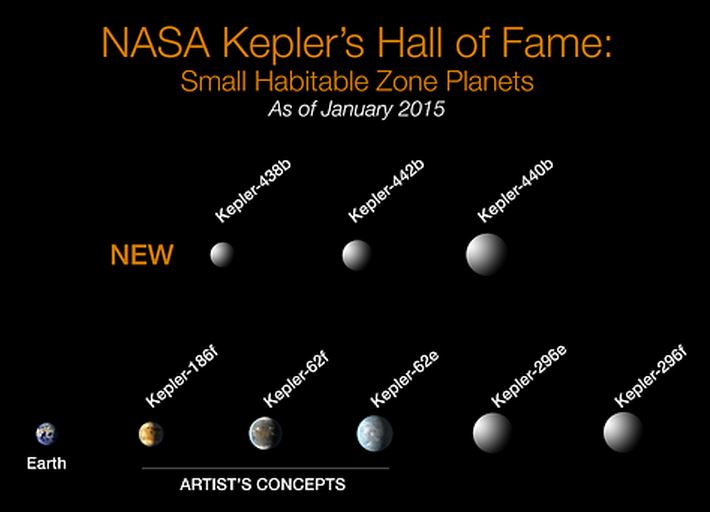For links see article source.....
Posted for fair use.....
http://www.dnaindia.com/scitech/rep...ace-suggests-earth-like-planet-exists-2066947
Mystery signals in space suggests Earth-like planet exists
Sunday, 8 March 2015 - 12:56pm IST Updated: Sunday, 8 March 2015 - 12:40pm IST | Place: London | Agency: ANI
Astronomers now believe that the mysterious signals, previously dismissed as stellar bursts, are indeed coming from an Earth-like planet.
Astronomers now believe that the mysterious signals, previously dismissed as stellar bursts, are indeed coming from an Earth-like planet.
Discovery of the planet known as GJ 581d was heralded in 2007, but new research in 2014 cast doubt on the claims, saying data used to find it was probably just misinterpreted signals from stars, the Independent reported.
Astronomers used a spectrometer to spot the planet, which measures "wobbles" in the wavelength of light emitted by a star caused as a planet orbits it. GJ 581d was said to be a super-Earth with a mass seven times that of our own planet orbiting a red dwarf star that could also support up to four other planets. The Habitable Exoplanets Catalogue currently records 23 objects of interest.
It was believed to be in the habitable "Goldilocks zone" in its solar system, where it is neither too hot nor too cold for liquid water to exist and support life on the surface.
Researchers revisiting the evidence claimed the body was actually just "stellar activity masquerading as planets" and its existence was widely dismissed without further questioning. However, now astronomers from Queen Mary University, in London, and the University of Hertfordshire have claimed the statistical techniques used to discount GJ 581d was "inadequate" for planets of its small size.
If GJ 581d does exist, it could be the most Earth-like planet yet discovered as ranked by the Earth Similarity Index but that does not mean its surface is the same. Some studies have suggested Gliese 581d's denser air and dim red light from its host star would make for a murky environment that would be toxic to humans.
The Index incorporates a number of factors including surface temperature and planet density to rank extrasolar planets in a scale from 0 to 1. The most Earth-like planet yet confirmed was Gliese 581g, orbiting the same star, which ranks at 0.89. For astronomers, the most exciting aspect is its relative proximity, 20 light years away in a galaxy that was 100,000 light years wide.
The study is published in Science.
Posted for fair use.....
http://www.dnaindia.com/scitech/rep...ace-suggests-earth-like-planet-exists-2066947
Mystery signals in space suggests Earth-like planet exists
Sunday, 8 March 2015 - 12:56pm IST Updated: Sunday, 8 March 2015 - 12:40pm IST | Place: London | Agency: ANI
Astronomers now believe that the mysterious signals, previously dismissed as stellar bursts, are indeed coming from an Earth-like planet.
Astronomers now believe that the mysterious signals, previously dismissed as stellar bursts, are indeed coming from an Earth-like planet.
Discovery of the planet known as GJ 581d was heralded in 2007, but new research in 2014 cast doubt on the claims, saying data used to find it was probably just misinterpreted signals from stars, the Independent reported.
Astronomers used a spectrometer to spot the planet, which measures "wobbles" in the wavelength of light emitted by a star caused as a planet orbits it. GJ 581d was said to be a super-Earth with a mass seven times that of our own planet orbiting a red dwarf star that could also support up to four other planets. The Habitable Exoplanets Catalogue currently records 23 objects of interest.
It was believed to be in the habitable "Goldilocks zone" in its solar system, where it is neither too hot nor too cold for liquid water to exist and support life on the surface.
Researchers revisiting the evidence claimed the body was actually just "stellar activity masquerading as planets" and its existence was widely dismissed without further questioning. However, now astronomers from Queen Mary University, in London, and the University of Hertfordshire have claimed the statistical techniques used to discount GJ 581d was "inadequate" for planets of its small size.
If GJ 581d does exist, it could be the most Earth-like planet yet discovered as ranked by the Earth Similarity Index but that does not mean its surface is the same. Some studies have suggested Gliese 581d's denser air and dim red light from its host star would make for a murky environment that would be toxic to humans.
The Index incorporates a number of factors including surface temperature and planet density to rank extrasolar planets in a scale from 0 to 1. The most Earth-like planet yet confirmed was Gliese 581g, orbiting the same star, which ranks at 0.89. For astronomers, the most exciting aspect is its relative proximity, 20 light years away in a galaxy that was 100,000 light years wide.
The study is published in Science.

